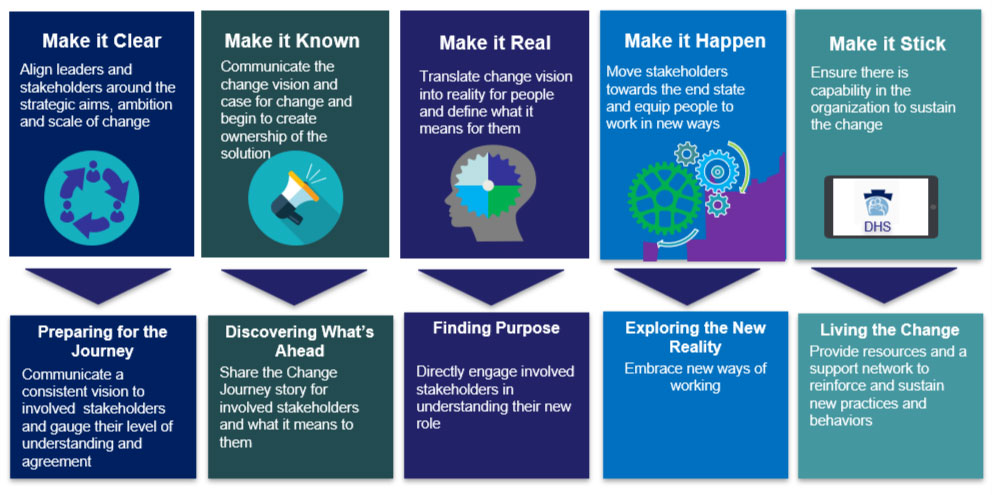Change & Training
DHS' Enterprise Case Management (ECM) transition will ensure that the people we serve are supported throughout the entire transition process.

Below are the keys to supporting our stakeholders and facilitating the move to the new platform:
- We must first
make it clear by aligning the goal of the change to DHS' needs. The success of an organizational change management process is directly related to each stakeholder's ability to commit to the objectives.
- We will
make it known by communicating the shared vision and case for change to stakeholders at all levels.
- We will
make it real by sharing how affected groups will be impacted.
- We will
make it happen by equipping impacted stakeholders with the tools and knowledge necessary to access and effectively use the platform.
- We will
make it stick by providing training opportunities and supporting users throughout and after the implementation process.
ECM stakeholders will be supported during each change phase.
Enterprise Case Management – What does it mean to me?